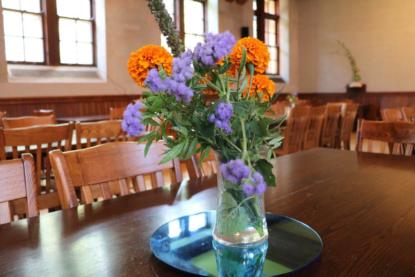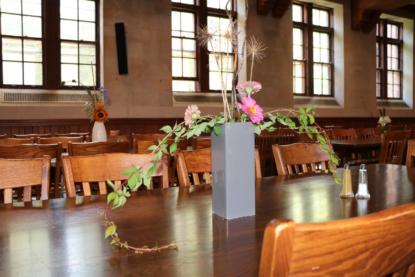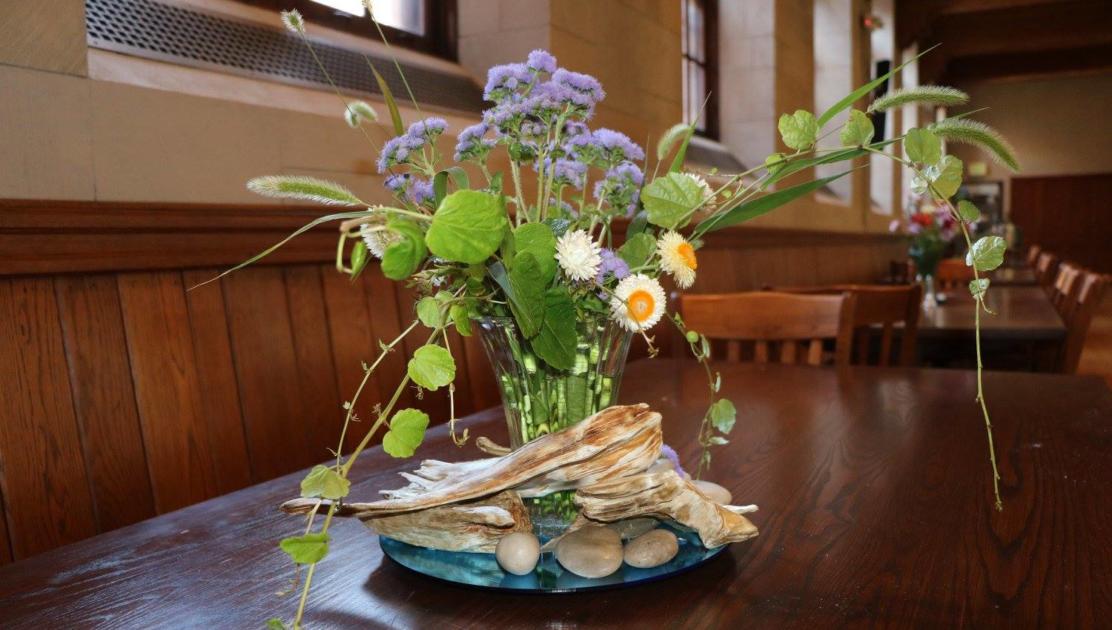Notes on Ikebana
By Stacey MitchellOn a recent late summer afternoon, the Garrison Institute Sustainability Committee organized a staff Ikebana workshop. Ikebana is a contemplative tradition within Japanese culture concerning the art of flower arranging, and it uses the concepts of Earth, Humanity, and Heaven in establishing a hierarchy of the elements in the arrangement. By using our sense of sight, each flower or branch can connect us to something beyond our body. Our existence can’t be without the support of the Earth just as much as we need the open sky, sunlight, and the solar system for our existence. The connection isn’t just symbolic, it is a literal interpretation of how we are interconnected to everything that surrounds us.


Ikebana is steeped in lineage—teachers who are masters pass down their intimate knowledge of interpretation to their students and in turn those students become masters and continue passing on their knowledge. Ikebana is not an intellectual understanding of flower arranging—it is an experience—just as you can’t master meditation by reading about it, you must experience Ikebana, ideally through the guidance of a master.
One of those masters is Tibetan Buddhist teacher and lineage holder, Chogyam Trungpa Rinpoche, who shared this tradition with his students before his passing. He was an admirer of Zen Buddhism and how the Japanese culture incorporated contemplation elements within their view of the world. There is no right or wrong way to make an arrangement; rather, what is important is what we experience in making the arrangement.
After learning the basics of Ikebana, I took charge of the weekly arrangements for a meditation center where I worked a few years ago. After tellingmy Garrison Institute colleagues about Ikebana,I offered to share a glimpse of my experience of the contemplative art form in an afternoon workshop. We recently held the workshop and everyone seemed to be affected by their experience of it.
Earth and Heaven are not separate from us. We are at the door of Heaven and the vast luminous sky opens above us all of the time. But still we forget that we ourselves have the ability to turn the door knob in each moment of life to connect to something luminous beyond our seemingly limited self.
Stacey Mitchell is the Garrison Institute’s Full Charge Bookkeeper. You can find her on Twitter here.
Photos taken at the Garrison Institute staff Ikebana workshop
